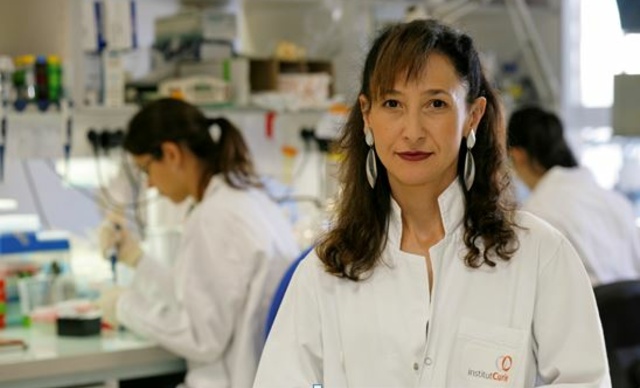Understanding how a tumour cell diverts its environment
Tumour cells are not isolated within the organism. They interact with their healthy neighbours and use them for their purposes. This "PIC 3i" programme, entirely financed by Institut Curie’s own funds and to a large extent by public generosity, aims to plunge into the heart of this microenvironment so propitious for tumour development.

All derived from an initial altered cell, cancer cells are not isolated within the organism. They mix with other, healthy ones. Some tumour cells go as far as modifying the environment which surrounds them in order to use it at will. Thanks to molecular exchanges, they ‘awaken’ the fibroblasts present in neighbouring tissues. These extremely abundant support cells form the framework of all the tissues. Habitually at rest, under normal circumstances these cells emerge from their lethargy to repair a wound or regenerate a tissue. They then acquire contractile properties and become myofibroblasts, which enables them to move around and invade the wounded area. This state is reversible because these cells then return to a quiescent, non activated state.
The fibroblasts can also be activated by signals – growth factors or chemokines – released by the tumour cells. They are then known by the generic name of "cancer-associated fibroblasts" (CAF). The CAFs constitute the most abundant cell population at the heart of the tumours, mixing with the tumour cells. Thus these CAFs, without being bearers of genetic alterations, are permanently activated by the tumour cells, which divert them for their benefit.
Once they are activated by the tumour, the CAFs participate in creating an environment even more propitious for their development, in particular their propagation. They acquire new functions which are not reversible. Thus, after having become a myofibroblast, this cell remains one and retains these properties. It is often the first cell to leave the tumour, leading tumour cells with it. This is the start of dissemination to other organs.
The CAFs act at different levels to promote carcinogenesis, but their precise actions are still not well-known. The Stress and cancer team (Inserm/Institut Curie) headed by Fatima Mechta-Grigoriou recently revealed for the first time that there appear to be several "families" of CAFs, with different properties and which do not react in the same way to the signals emitted by the tumour cells. "We want to understand why and how these CAFs use their physical and biological properties to interact with the tumour cells", said Fatima Mechta-Grigoriou, the coordinator of this programme.
Furthermore, the researchers have already identified 4 profiles of CAFs associated with distinct sub-groups of female populations with aggressive breast cancer. There is thus a link between the clinical data, in particular the proportion of metastases, and the different classes of CAFs identified by this laboratory. Since these cells are genetically stable, they represent a very interesting therapeutic source, complementing the treatments which target tumour cells. By associating researchers and clinicians, all internationally renowned, this PIC3i will make it possible to continue and develop the research to unlock the secrets of CAFs, the cells so close to tumour cells. Having the capacity to slow or facilitate cancer growth, they could constitute allies or targets in the fight against the disease.
Coordinator
- Fatima Mechta-Grigoriou, head of stress and cancer team (Inserm/Institut Curie)
Partenaires
- Vassili Soumelis, head of Integrative Biology of Human Dendritic Cells and T Cells team
- Emmanuel Barillot, head of Bioinformatics and Computational Systems Biology of Cancer team
- Andrei Zinovyev, researcher in Bioinformatics and Computational Systems Biology of Cancer team
- Danijela Vignjevic, head of Cell migration and invasion team
- Anne Vincent-Salomon, head of Diagnostic and Theranostic Medicine division department
